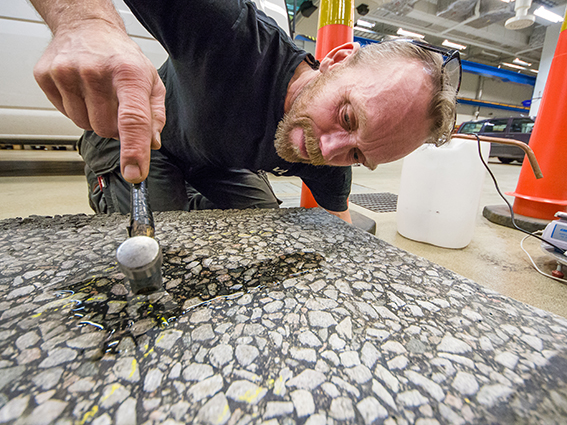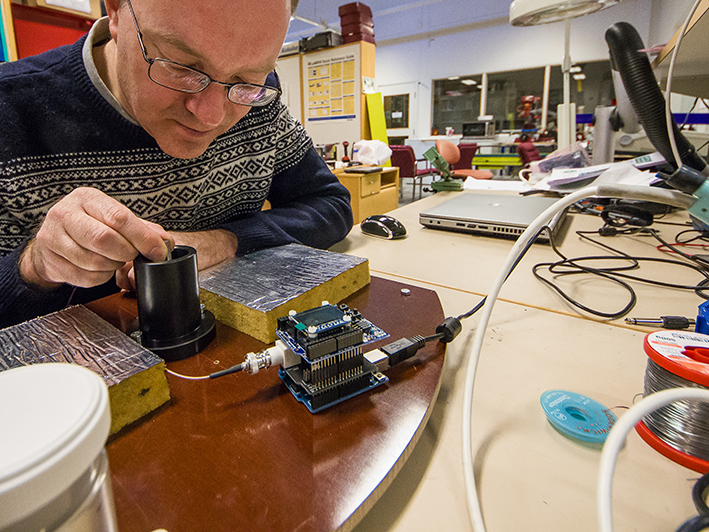 Many initiatives are currently underway around Sweden intended to make it safer to move around outdoors in winter and increase the proportion of trips by bicycle or on foot. However, nearly all our knowledge of winter road maintenance derives from the maintenance of airports and vehicle roads in wintertime. As a result, it is doubtful whether the follow-up methods, tools, and metrics currently available are applicable to pedestrian and bicycle paths.
Many initiatives are currently underway around Sweden intended to make it safer to move around outdoors in winter and increase the proportion of trips by bicycle or on foot. However, nearly all our knowledge of winter road maintenance derives from the maintenance of airports and vehicle roads in wintertime. As a result, it is doubtful whether the follow-up methods, tools, and metrics currently available are applicable to pedestrian and bicycle paths.
Pedestrian and bicycle paths constitute a completely different environment from roads, with individual shoe soles and bicycle tyres replacing car tyres in interactions with the salt/snow mixture on the road surface.
“The processes that determine the effects and durability of anti-skid measures are, quite simply, different ones”, says VTI researcher Göran Blomqvist. This means that new follow-up methods have to be developed.
Such a development process will understandably occur with theoretical principles in mind, but then laboratory testing under controlled conditions will be needed to scale the existing measurement methods from airport and vehicle-traffic scale to the “sidewalk level”. Once the new follow-up tools exist as prototypes they will need to be validated, both in the laboratory and, even more importantly, out in the real world.
“That’s why it’s extremely valuable to have employers who are as committed and involved as, for instance, the City of Stockholm and the Swedish Transport Administration”, says Blomqvist.
New measurement tools
Two new tools will be developed during the 2015–2016 winter season at VTI’s measurement technology laboratory and workshop, one to quantify the amount of salt present on a pedestrian or bicycle path, the other to make it possible to measure the effect of an anti-skid measure in terms of ice quality.
“It’s okay for a freezing process to occur”, says Blomqvist, “as long as the frozen material is so low in quality [i.e., rough] that it does not reduce the friction too much”.

Arne Johansson from the VTI workshop tests impact angles for the ice-quality sensor being developed to assess the effect of anti-skid measures on pedestrian and bicycle paths in urban areas. Photo: Göran Blomqvist

At the VTI measurement laboratory, Bengt Lindström is programming the sensor to be used to quantify the amounts of salt on pedestrian and bicycle paths in Stockholm in the winter of 2015–2016. Photo: Göran Blomqvist
Nordic cooperation expanding
Issues pertaining to winter road maintenance are common to the entire Nordic region, which is why VTI has now expanded its cooperation with the winter maintenance laboratory that the Norwegian Public Roads Administration, the equivalent of the Swedish Transport Administration, operates jointly with the Norwegian University of Science and Technology (NTNU) in Trondheim.
“Much of our latest knowledge of these issues comes from the research team in Trondheim, with whom we are currently intensifying our cooperation. It will be very interesting to compare the tests we are conducting in our climatic test cabinet and in the field with the activities they are engaged in at their significantly larger winter research facilities”, says Blomqvist.
Experiences must be documented and compiled
Municipalities throughout Sweden have begun using new winter maintenance methods on their bicycle paths, such as the “sweep-salting” method. However, different municipalities have had slightly different experiences with it.
“It is crucial that these experiences be documented and compiled so that they can be exchanged nationally and internationally. The City of Stockholm has received assistance from VTI in its follow-up efforts since the 2013–2014 winter season. This specific close cooperation among researchers, road maintenance authorities, and contractors has been particularly successful”, says Blomqvist.
Several projects progressing in the same direction are currently underway at VTI, and major synergistic benefits can be derived from allowing all the experiences and knowledge in the field to cross-pollinate one another.
 Contact: Contact:Göran Blomqvist, Researcher goran.blomqvist@vti.se VTI, Sweden |






Follow us: